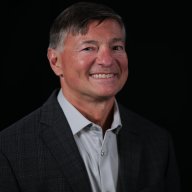
How two students scale process mining at ENERVIE
Jannis Nacke and Max Aberman, ENERVIE's process experts, took a student gig at the utility maker and turned it into a cross-department digitization effort.
With the support of ENERVIE CEO Erik Höhne, Nacke and Aberman are currently embedding process mining throughout the utility's operations.
The duo graduated from the South Westphalia University of Applied Sciences in Germany. Aberman is pursuing a Master's degree at the same university and Nacke is at the Frankfurt Business School. Both are publishing papers on process mining.
Also see: ENERVIE transforms with digitization, process excellence
In fact, Aberman and Nacke have built on ENERVIE's academic pipeline and brought on more students to implement Celonis process mining, research topics and publish scientific articles. In the last 2.5 years, students working at ENERVIE have produced 4 bachelor thesis with three master theses and another bachelor thesis published in 2023. Nacke and Aberman, who are collaborating with Celonis’ Academic Alliance, are already building the student pipeline for 2024.
We caught up with Nacke and Aberman to talk shop and reveal the art of scaling. Here are some of their tips.
Every business user and department is different. Nacke said there isn't just one approach to scaling process mining, but one common theme is to be useful.
"What you've got to keep in mind, even though we are young guys doing tech, is that we are working in an industry that is usually very conservative in its approach. We had this in mind from the very first moment. We're trying to not overload them with the capabilities of Celonis. Because Celonis is a very strong technology. You have to keep the hurdles and the entry barriers very low for every single department to get them into the usage of Celonis. So what we are doing is we are giving them very easy to understand analysis in the beginning."
Aberman added:
"We focus on their biggest problems. We don't just do the easy stuff, but the stuff which helps the most."
Driving value. Nacke said it makes sense to create value very quickly and then expand usage. Aberman said after initial returns it helps to move up the maturity scale.
"We ask 'how about some automation here? A different department did an email automation which really helps them.' Then they say, 'Oh, that's cool. We can use it here and here.' Then we implement it. We try to pretty much reuse patterns that worked in different departments."
Nacke also said value is more than just bottom line KPIs. "Sometimes it is way better to reduce pains within a department than to just go for the value perspective. It needs to be a combination of both."
Prioritizing process mining projects. Nacke and Aberman said the prioritization of projects encompasses value as well as cultural pain points.
Nacke said:
"We are looking for the processes that are mass processes where we have a lot of traffic and have a lot of potential for things that can go wrong. On the other hand, we also need to look for the availability of departments in order to start a project."
Aberman said top down support makes prioritization easier too.
"If it's really important to get the foot in the door in a new process and a new department, it's pretty much a top management decision. If an important stakeholder at the company says, 'We need that and that process to be implemented, it's extremely crucial for the overall company.' Then no one says no."
Scaling across processes. Aberman said a central group has been formed largely because it's hard to give every department attention. Once there's a structure, Aberman and Nacke are trying to foster a grass-roots movement.
Aberman said:
"You want to get people excited about the technology that solves their problems and tells colleagues about it. That way it's way easier change management."
Nacke said it's quick to do a minimum viable product or proof of concept and then scale to find value. "You need to scale fast to reach value fast," said Nacke. "But at a certain point you have to come back to the quality part of analysis to get the complete picture."
Moving up the maturity ladder. Nacke said ENERVIE is evolving to use more execution apps and looking at processes holistically. You don't take that approach right away because it can be overwhelming.
The future is an end-to-end view of process continual improvement. Aberman said:
"As we are looking into different departments at the same time we see one is dependent on the other. With Process Sphere we assume it will be much easier to have these processes, which are combinations of different departments, combined."
Nacke added that "the puzzle is coming together and it will be very important for us."
Forming more process grassroots movements with students. Nacke said the movement can be replicated with academia. He said:
"Students have to get into this because it's very easy to start with Celonis in the beginning. The journey is getting very complex on the way, but it is very nice with the academic help that Celonis is providing. We are just at the beginning of something big. Processes are getting more complex and we are reaching a point where it's impossible without technology to properly manage these processes."
For more information on replicating these efforts and projects visit Celonis Academic Alliance.






